DJI Mic Mini review: content creators, start here
Deceptively clever wireless mic has something for everyone, not just beginner creators
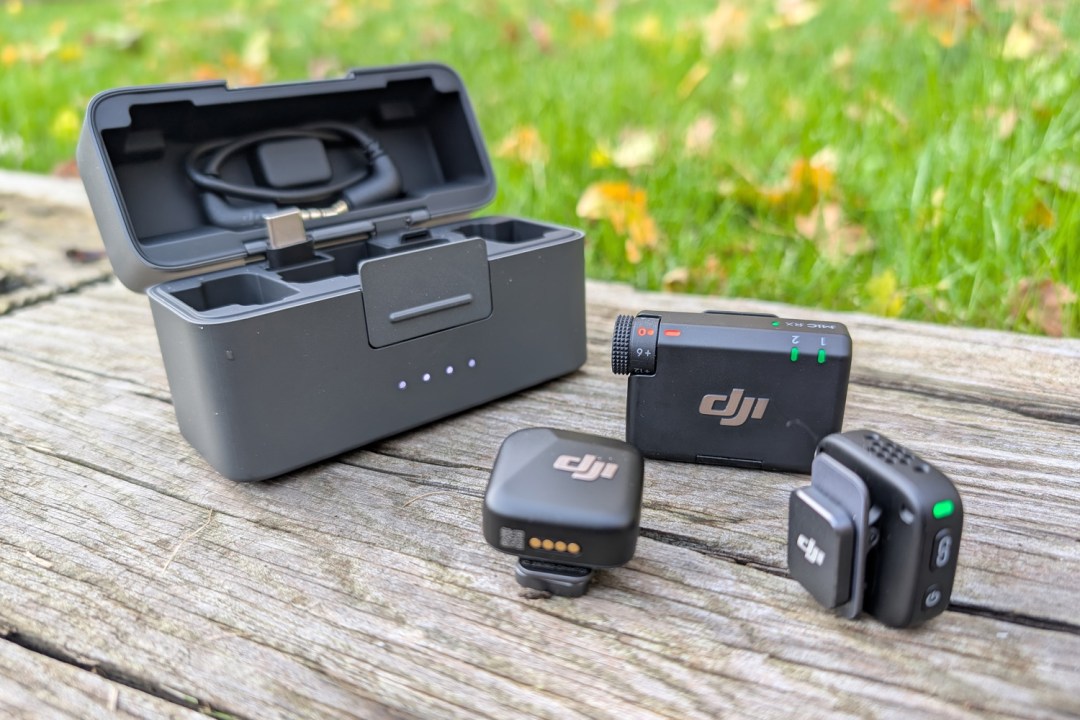
Stuff Verdict
A brilliantly thought-out wireless microphone system that nails the basics – and has features more experienced content creators will love too.
Pros
- Fantastic sound quality and consistent wireless range
- Comprehensive and genuinely useful accessories
- Modular approach suits all kinds of creators
Cons
- Charging case isn’t the smallest
Introduction
Stepping up production values to give your content a more professional feel usually means investing in ever-pricier kit. Even if you’re shooting on a smartphone, lighting rigs, gimbal stabilisers and microphones should all be on your shopping list. Until now, DJI’s wireless mics have focused on pro-grade features – with prices to match – but the new Mic Mini is all about the entry-level.
Lighter, smaller, and much more discreet than the DJI Mic 2, this idiot-proof audio upgrade has something for every step of the content creator journey. The microphone can be had by itself for $59/£49/€59, for Bluetooth pairing to a smartphone. Adding a receiver takes the total to $89/£79/€89, and brings direct USB-C and 3.5mm connections for devices that can’t record wirelessly on their lonesome. A charging case then adds a second microphone into the mix, along with a bunch of useful accessories, for $169/£145/€169. Should you want to upgrade later, the charging case can also be had separately.
It takes on the Rode Wireless Micro, which impressed me very recently with its compact dimensions and plug-and-play smartphone recording. Did the DJI’s more flexible approach replace it in my camera bag?
How we test headphones
Every pair of earphones and headphones reviewed on Stuff is used for a minimum of a week’s worth of daily listening. We use a playlist of test tracks made up of multiple genres to assess sound, and use our years of experience to compare to other models. Manufacturers have no visibility on reviews before they appear online, and we never accept payment to feature products.
Find out more about how we test and rate products.
Design & build: small but mighty
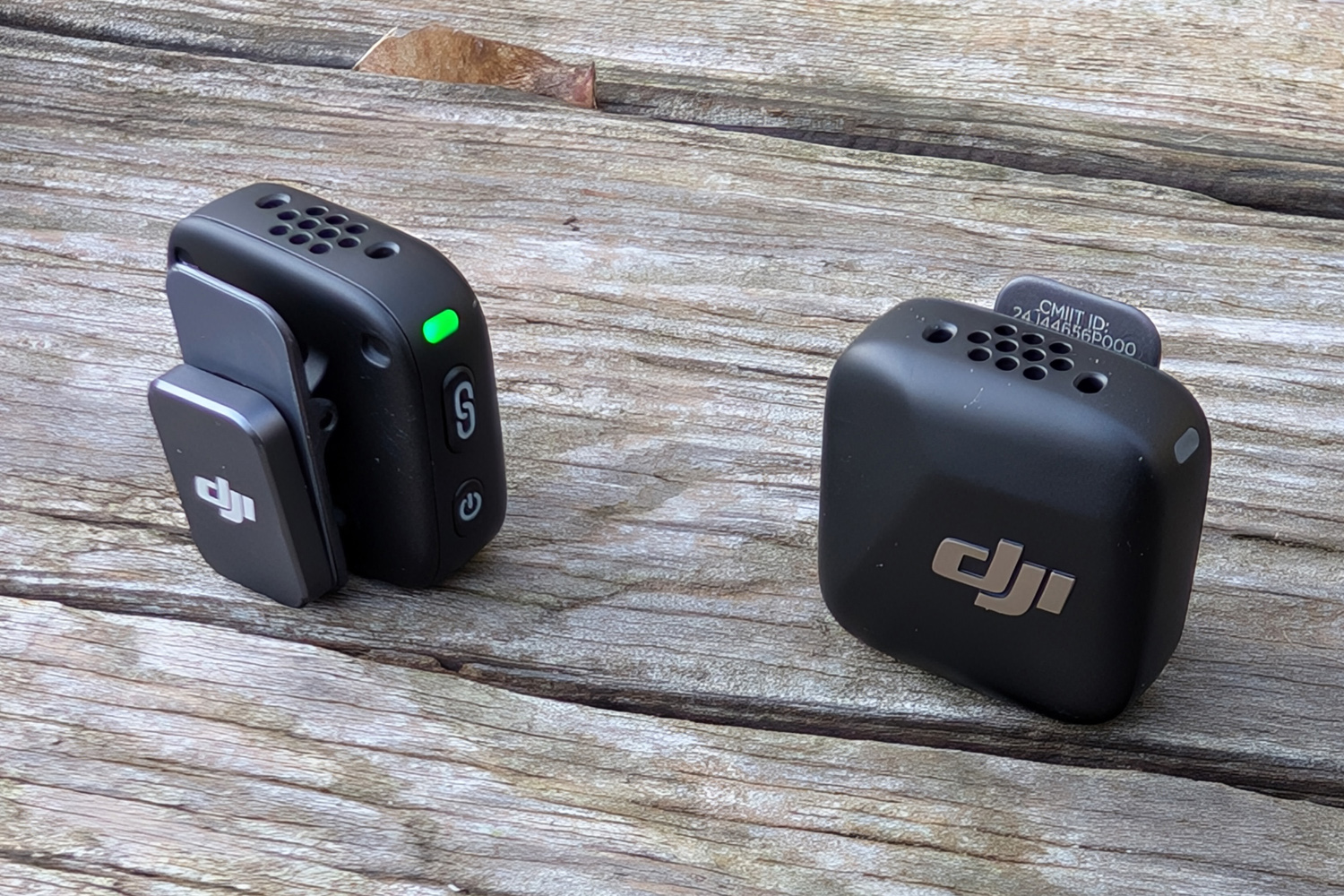
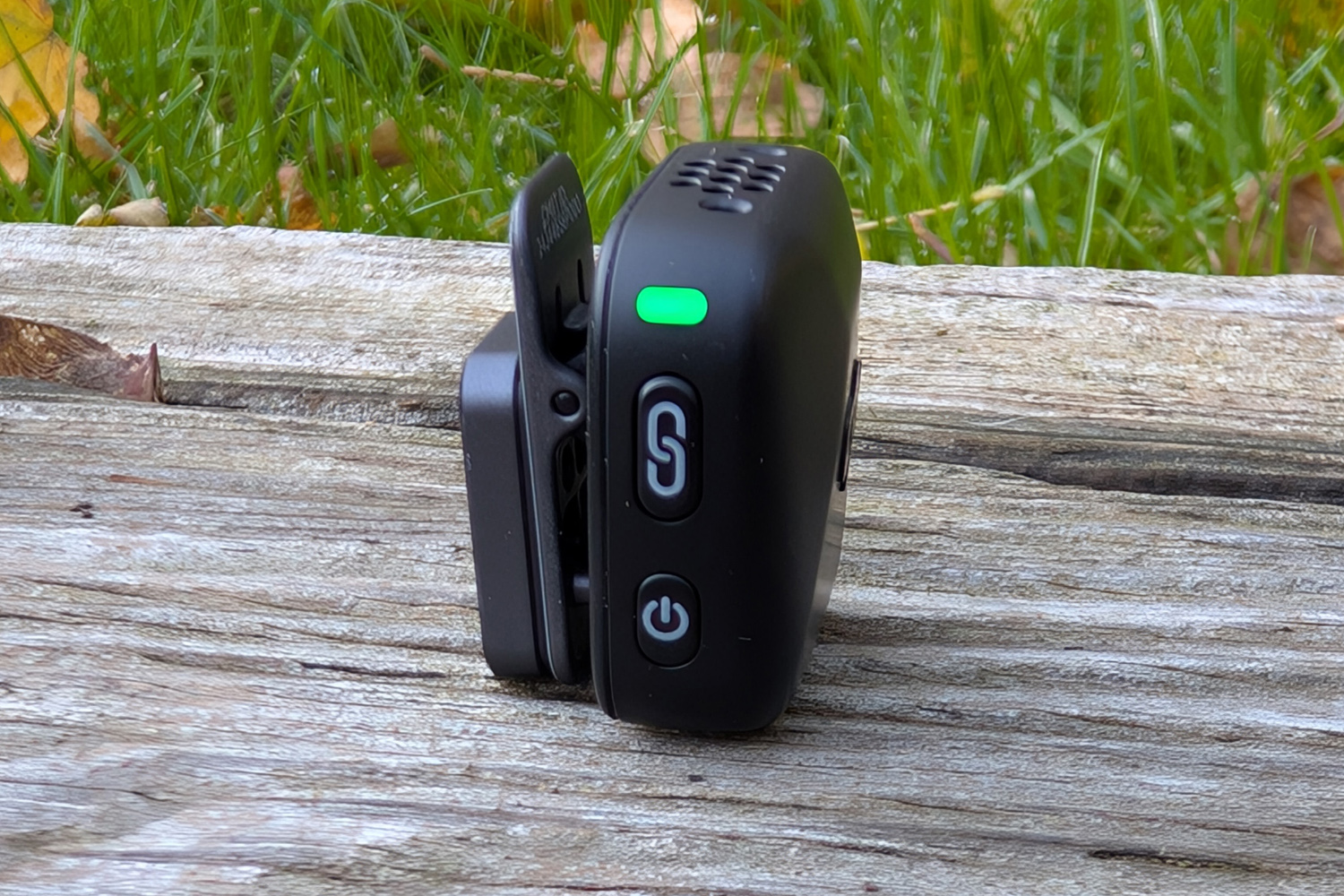
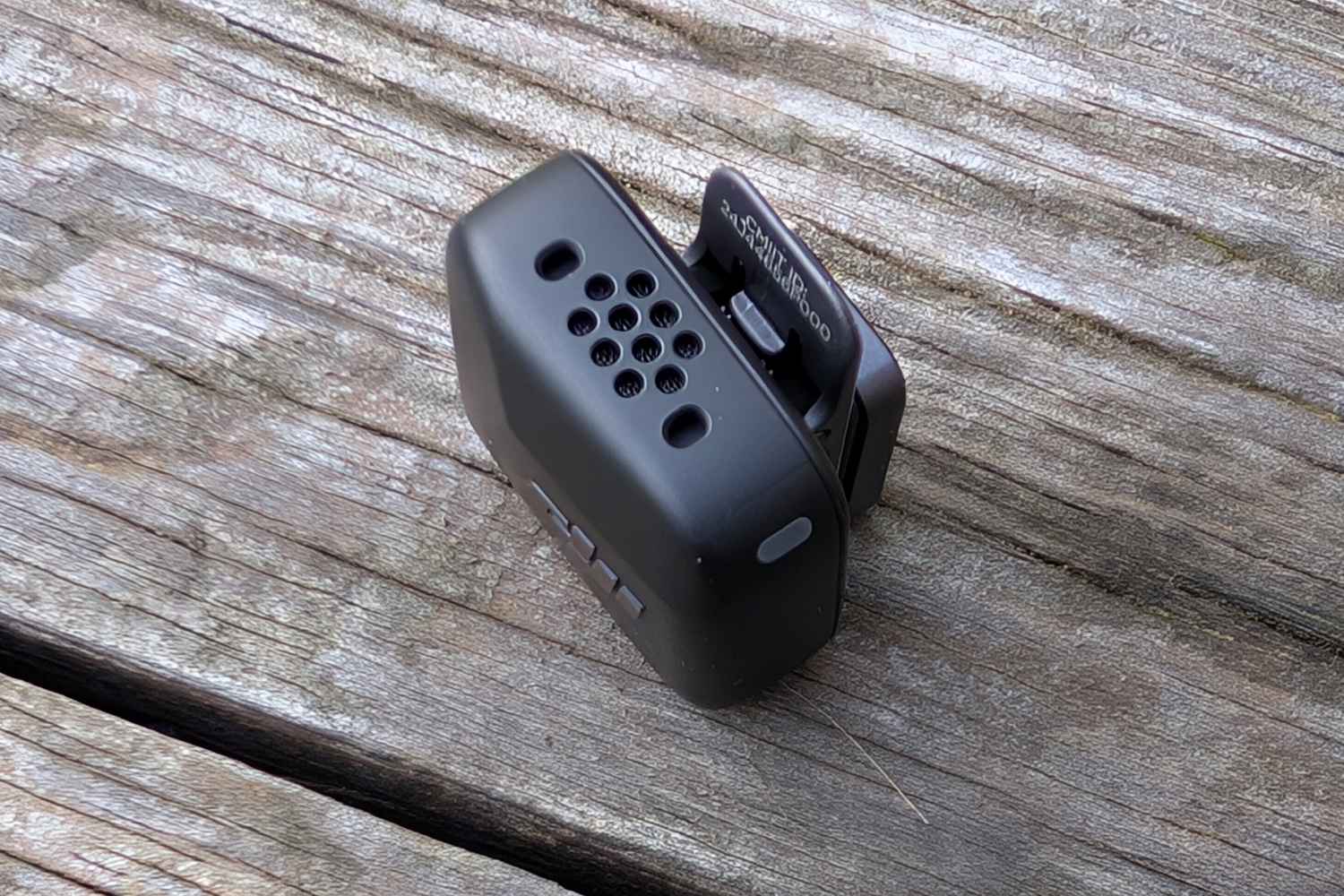
The Mic Mini itself is a delightfully diddy square that’s roughly half the size of a DJI Mic 2 wireless lavalier. Even with a fluffy wind shield attached, it weighs so little it won’t drag your clothing down. The built-in clip is great for attaching to a shirt collar, or a tiny magnet goes underneath your cloths if you need a different placement.
The omnidirectional condenser mic sits up top, charging pins lie at the bottom, and two buttons are found at the side alongside an activity LED. One powers on the transmitter, and the other activates Bluetooth pairing mode. You can disable the LED if you find it distracting.
There’s no on-board storage here, so you’ll need to rely on your paired device for saving your recordings. A 3.5mm port doesn’t make the cut either, but seeing how subtle it looks I can’t see why you’d want to use a wired lav mic anyway.
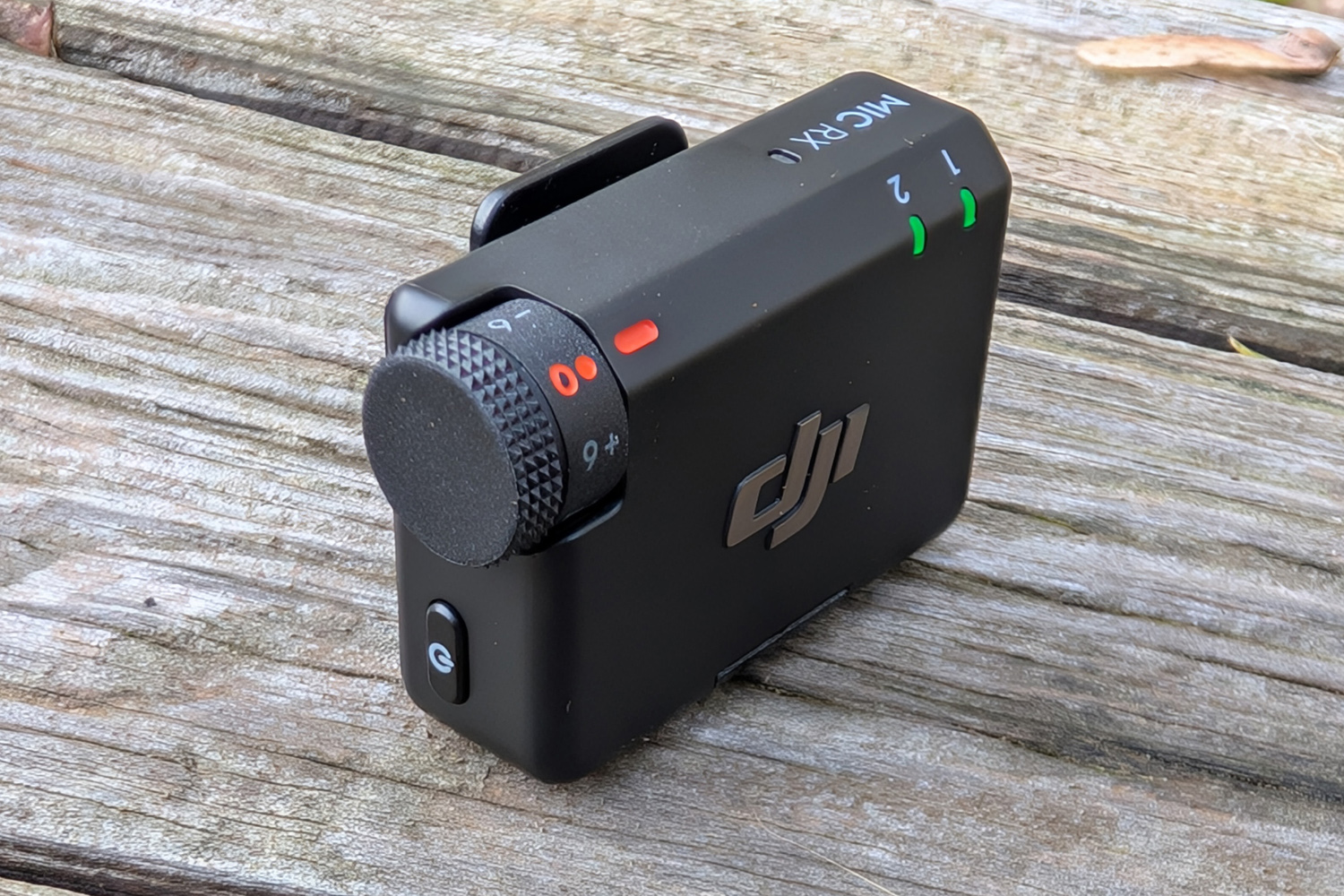
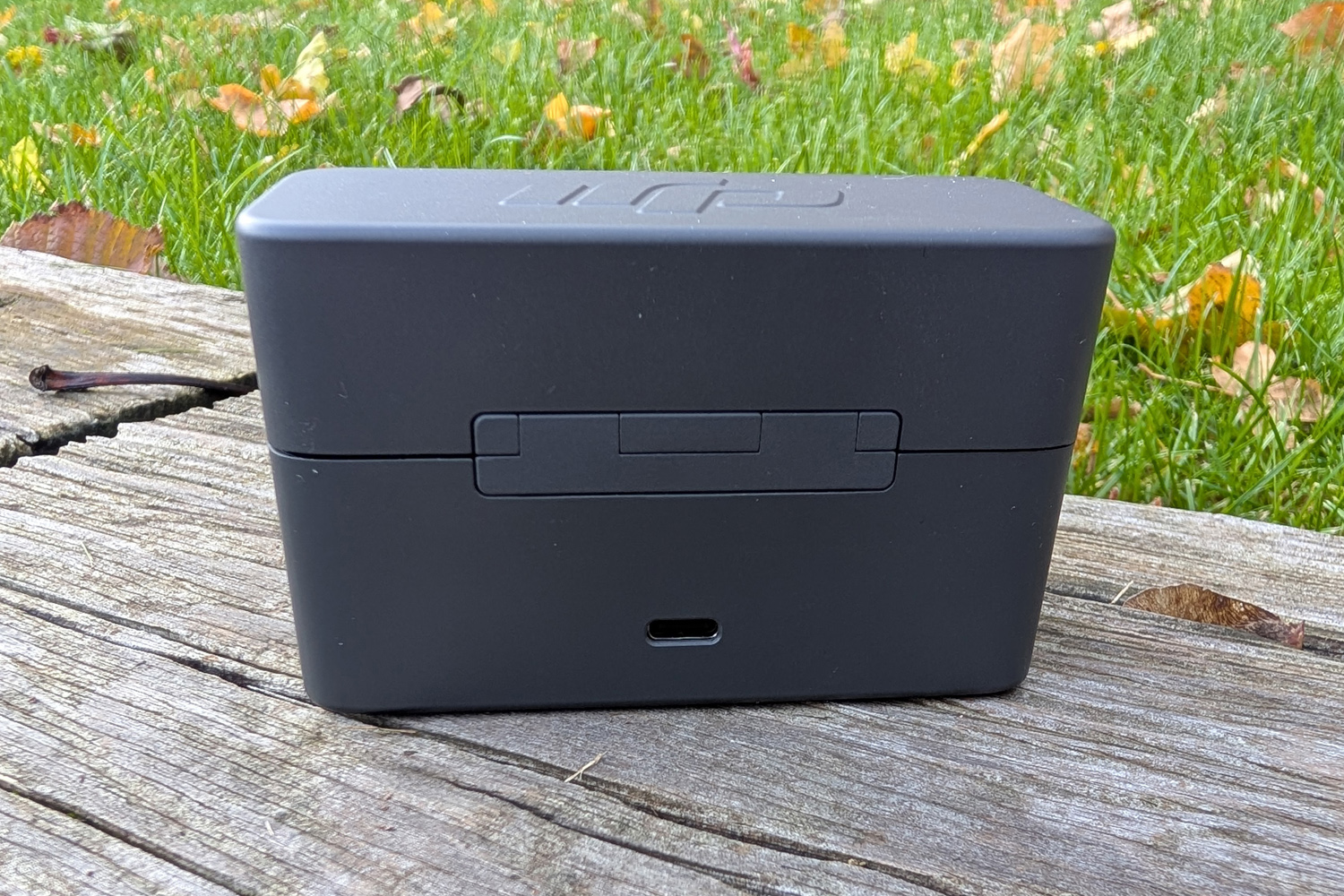
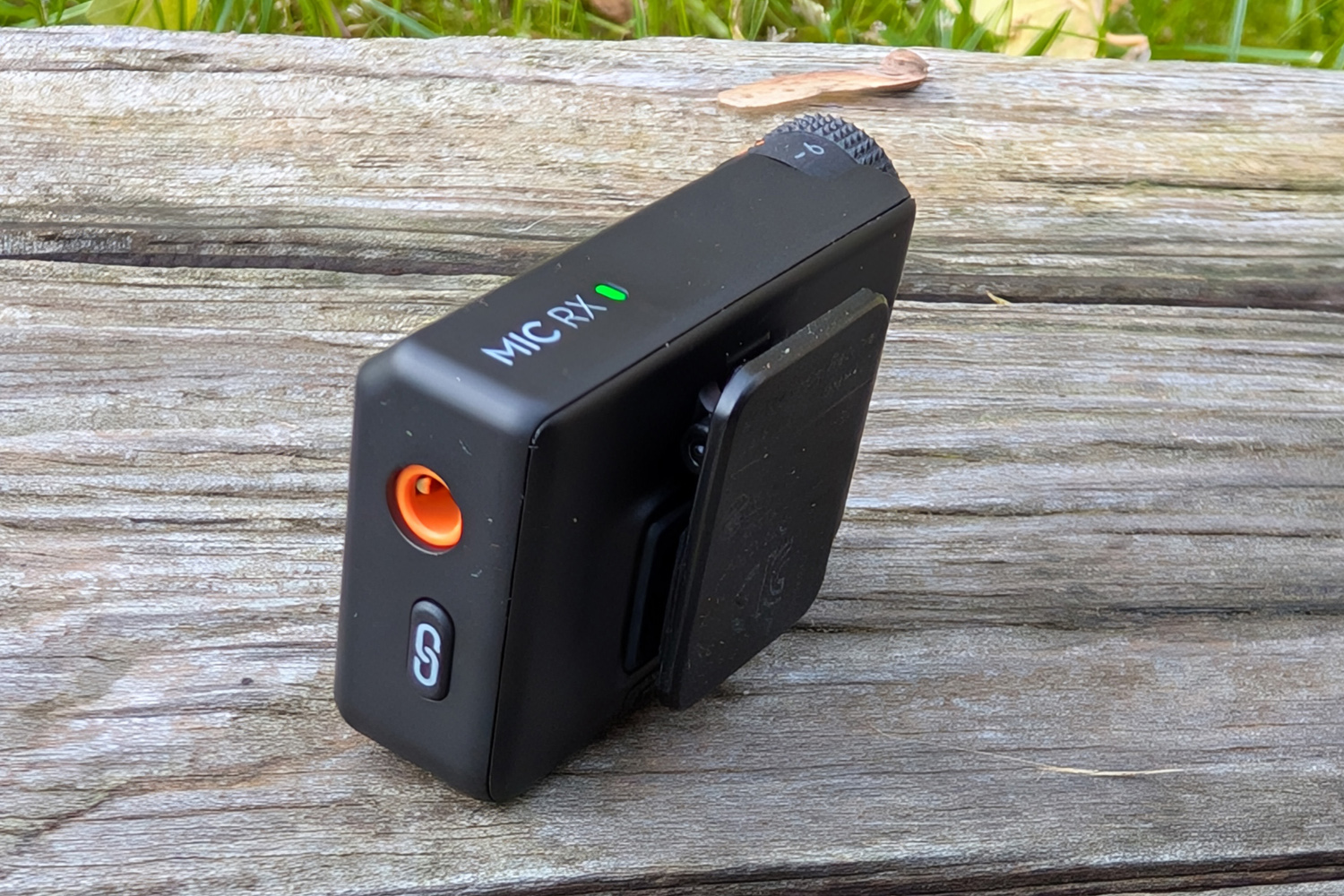
The receiver is only slightly bigger, and almost as simple. It goes without the Mic 2’s OLED touchscreen, but still finds room for a gain control dial, a trio of activity lights, and a pair of buttons for controlling power and pairing. A clip at the rear fits perfectly onto a digital camera’s cold shoe mount, which is perfect for keeping your shooting setup neat.
The USB-C and 3.5mm ports let you connect directly to your recording kit, be it a phone, camera, or laptop. There’s also what looks like a tiny little hot shoe on the bottom edge, which lets you attach a right-angled USB-C connector and plug straight into a smartphone without any dangling cables. It was recognised by my Google Pixel 9 Pro XL straight away, with no app installs required.
Handily DJI has left space for this inside the charging case, which should stop it getting lost when not in use. There’s a second slot for a Lightning adaptor, in case you’re still shooting on an older iPhone, though one isn’t included; you’ll need to spend an extra $19/£19/€19 to get one.
The case is palm-sized, and pretty thick – it’s almost twice as big as the Rode Wireless Micro. I don’t mind, though, as DJI has found room inside for more than just the two microphones and transmitter. It can also stash the 3.5mm cable for devices that don’t support USB-C or Bluetooth recording, and there’s space to keep the wind shields permanently attached to the mics, too. For sheer ease of use, it’s hard to beat.
Features & battery life: convenience is king
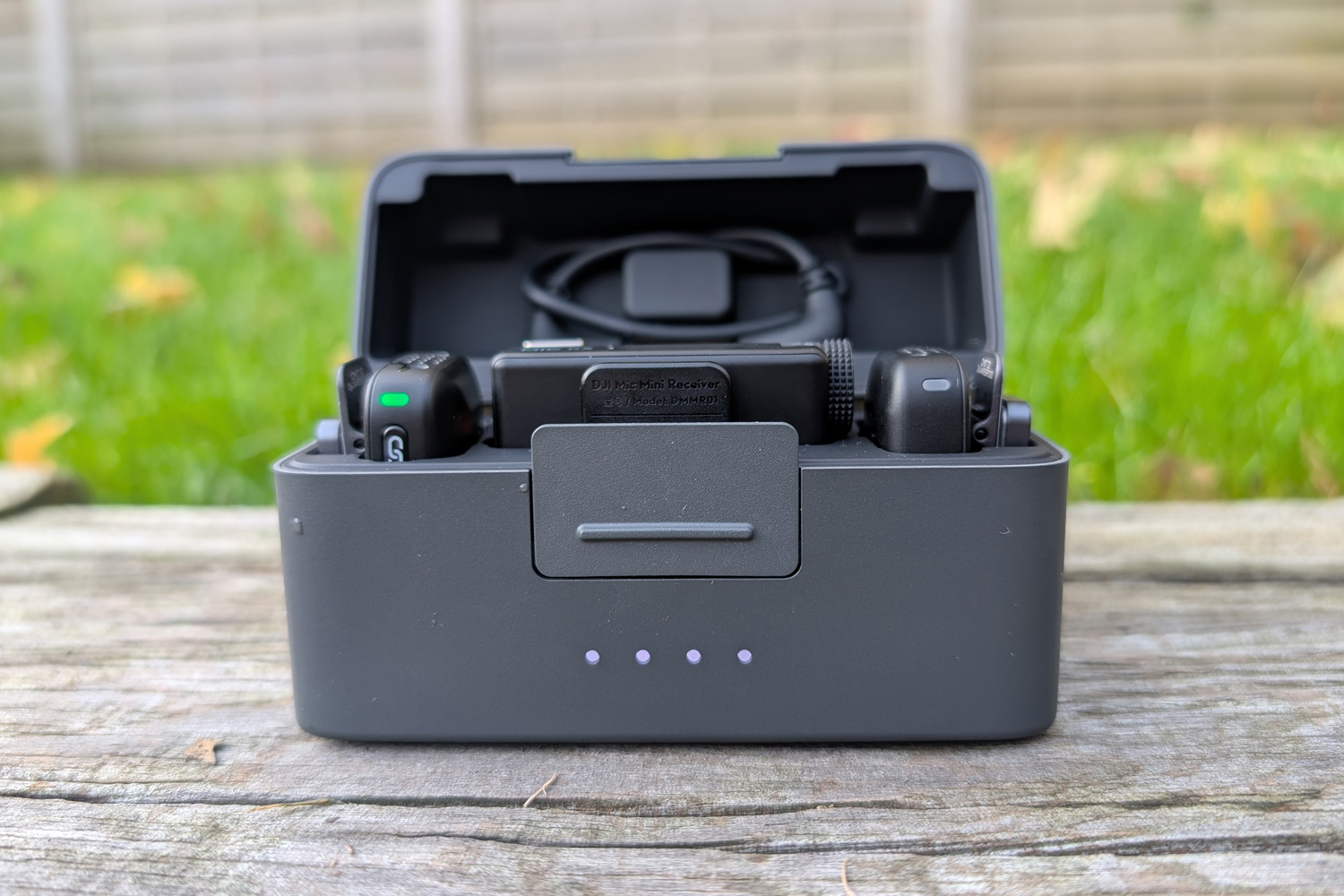
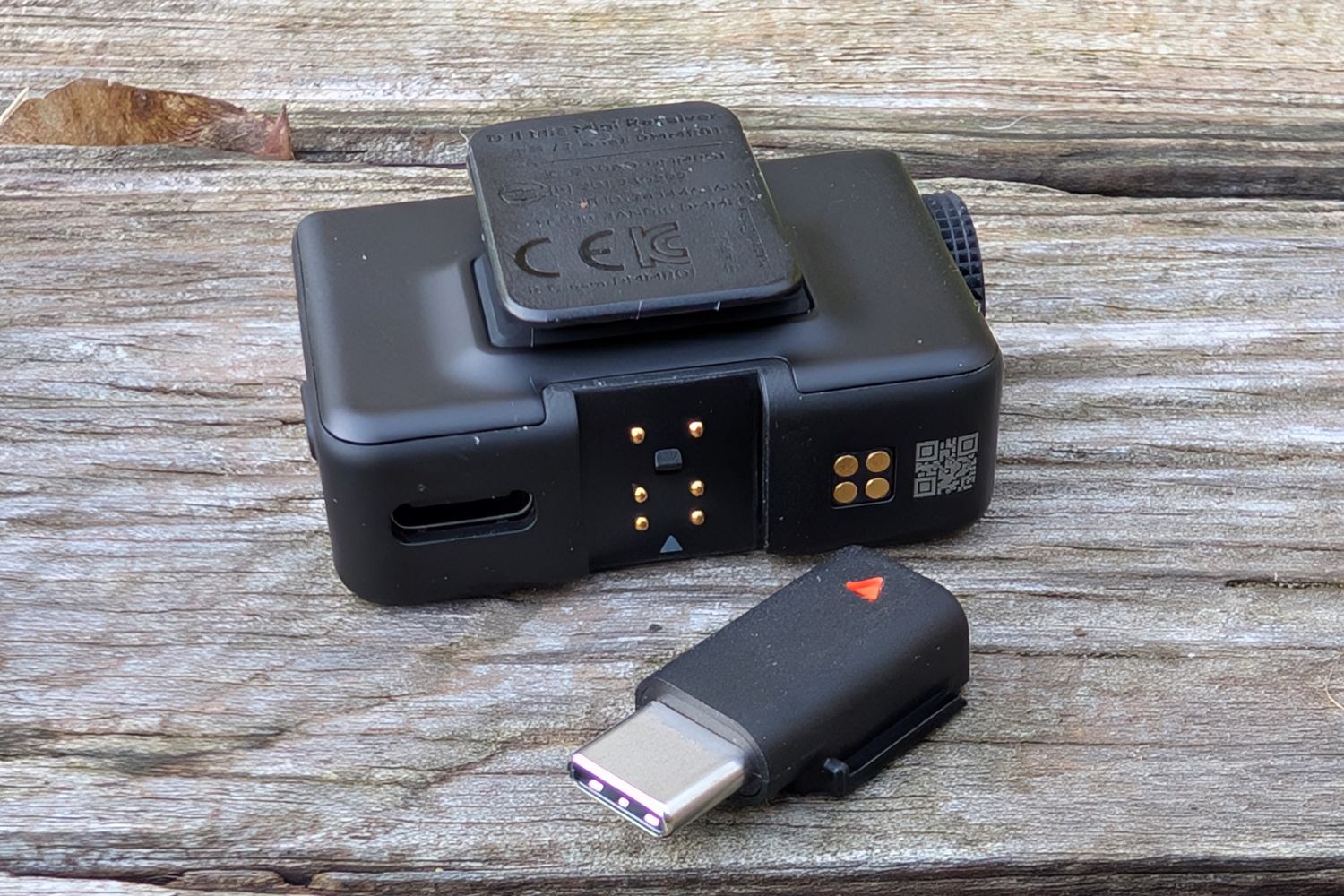
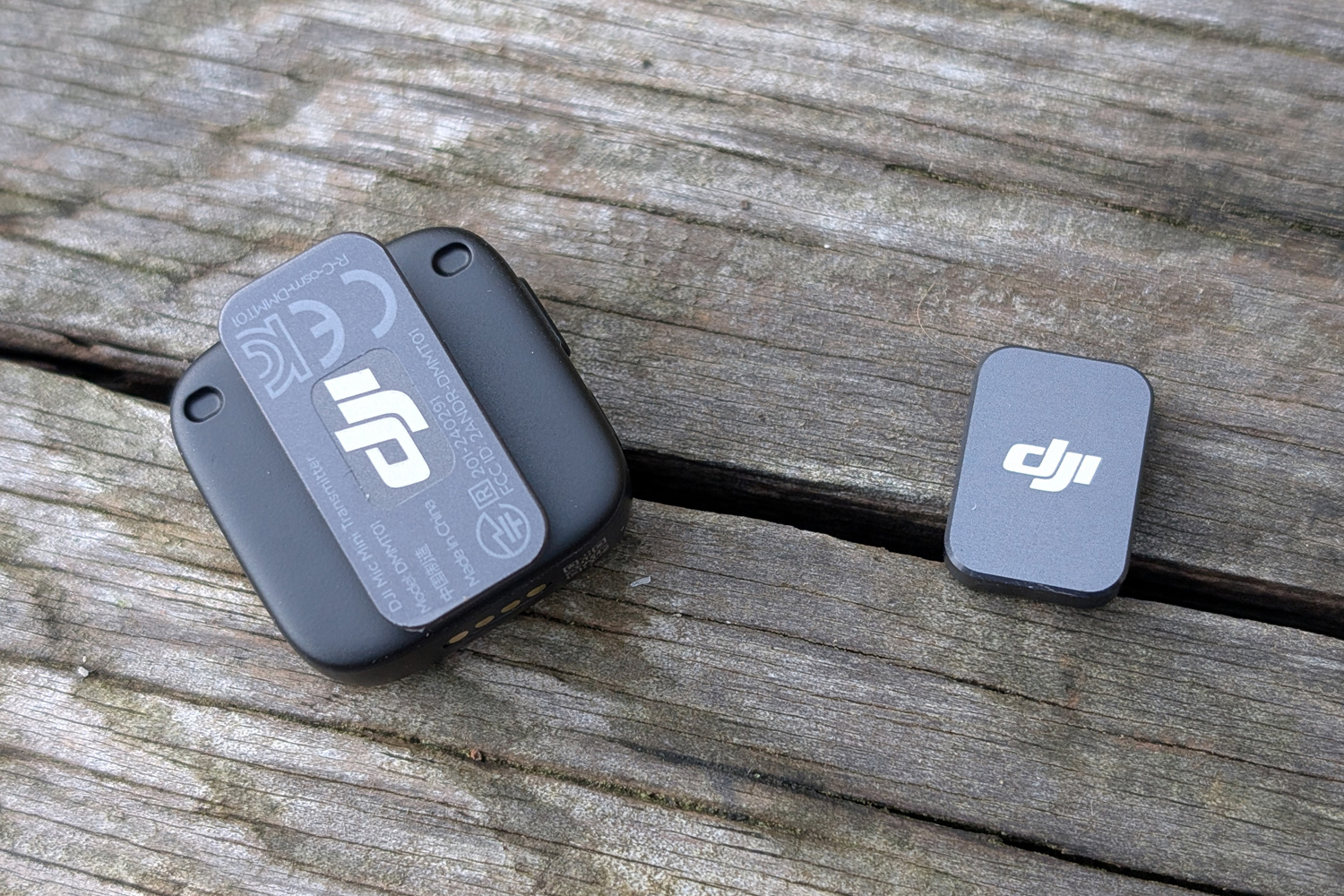
The DJI Mic Mini isn’t short of extras. The bundle comes with a weather resistant carry bag with multiple compartments, a USB-C charging cable, and two different types of wind shield. It’s a nice addition, but I’ve largely kept this at home and just carried the charging case around with me, as it’s got ample room for the 3.5mm cable and two wind shields.
Some of the case’s bulk is down to the built-in battery. Each transmitter can last a little over ten hours and the receiver nudges past eleven, but once they eventually run dry the case can refuel them three times over, for a total recording time approaching 48 hours. That’s easily enough for week of workday audio recording.
Ten minutes inside the case is enough for the transmitters to be good for another hour of recording, while you’ll need an hour and a half to fully refuel the charging case once it’s totally spent. I like that the case has a row of LEDs to show how much juice it has left – handy, as this doesn’t appear in the smartphone app.
As long as the case has a bit of charge, the microphones and receiver automatically power on when you open the lid. They come pre-paired, and will reconnect once you return them to the case even after using one of the mics in Bluetooth mode, so I never had to worry about losing a recording because I’d forgotten to swap pairing modes.
Interface: all you need, nothing you don’t

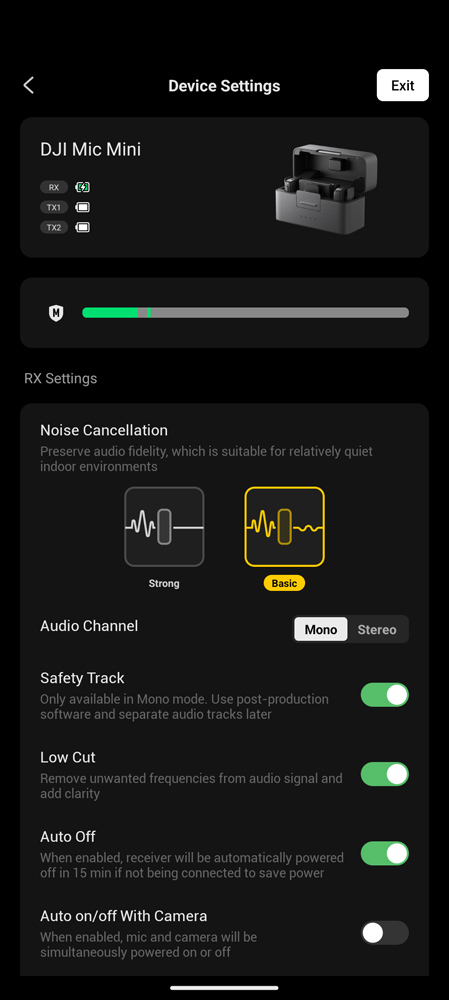
DJI’s Mimo app might be a little keen to sell you on the firm’s action camera line-up, but is otherwise wonderfully straightforward. Plug the Mic Mini receiver in and it’ll take you straight to the settings screen, where you can pick between two levels of background noise cancellation, pick between mono and stereo recording, and toggle a handful of settings designed to keep your clips clean.
A Low Cut removes low level frequencies without stripping too much timbre from voices. Clipping control effectively adjusts volume on the fly, and you can also activate a -6dB safety track when recording in mono mode. There’s no way to separate the audio tracks without post-production software, though.
The app also handles firmware upgrades, shows how much battery life the different parts have remaining, and lets you adjust a few power-saving settings to get maximum recording time between trips to the charging case. Pretty much everything is a one-touch toggle, with no confusing parlance for first-time content creators.
What it can’t do is record audio. You’ll need a third-party app for that.
Sound quality: loud and clear
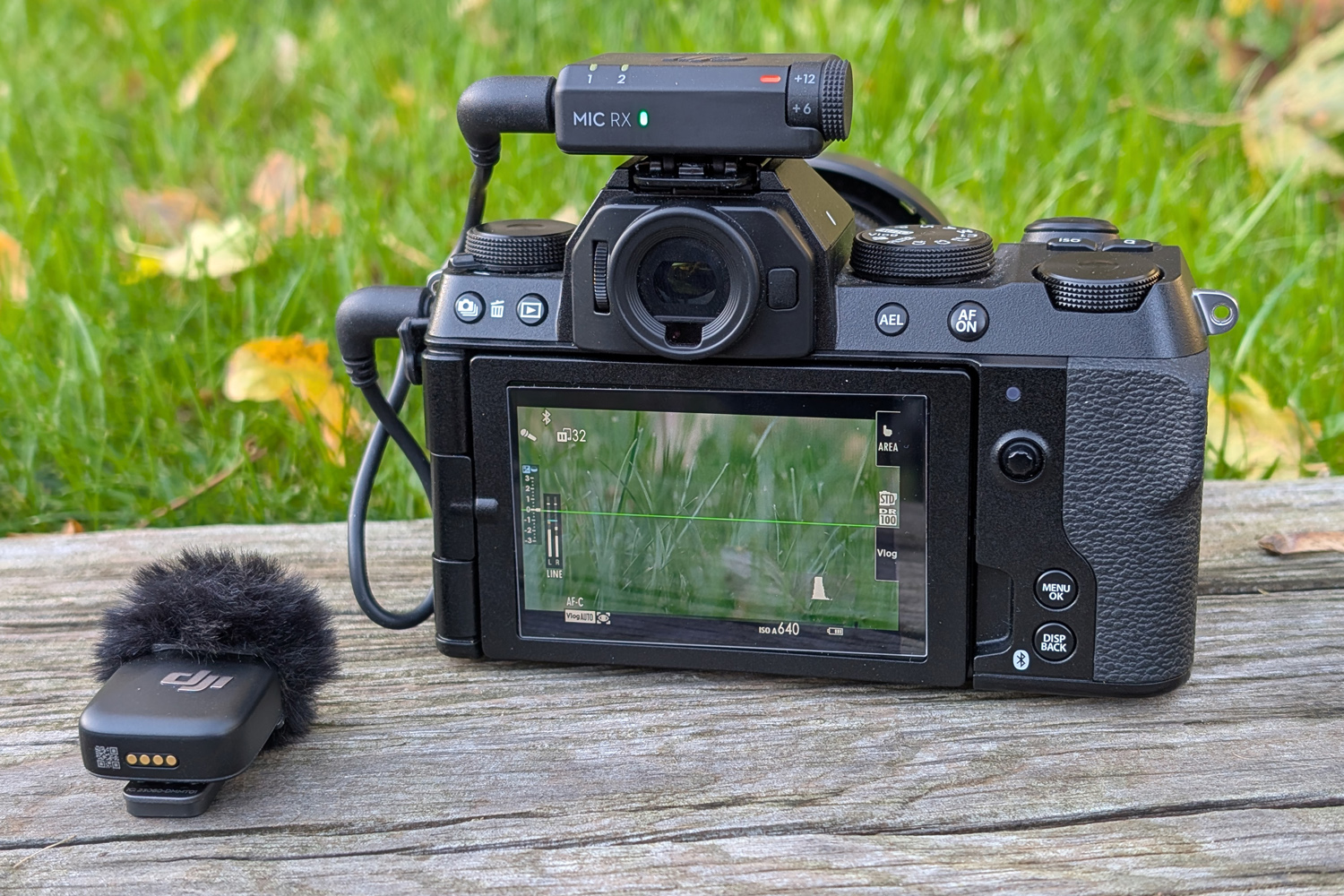
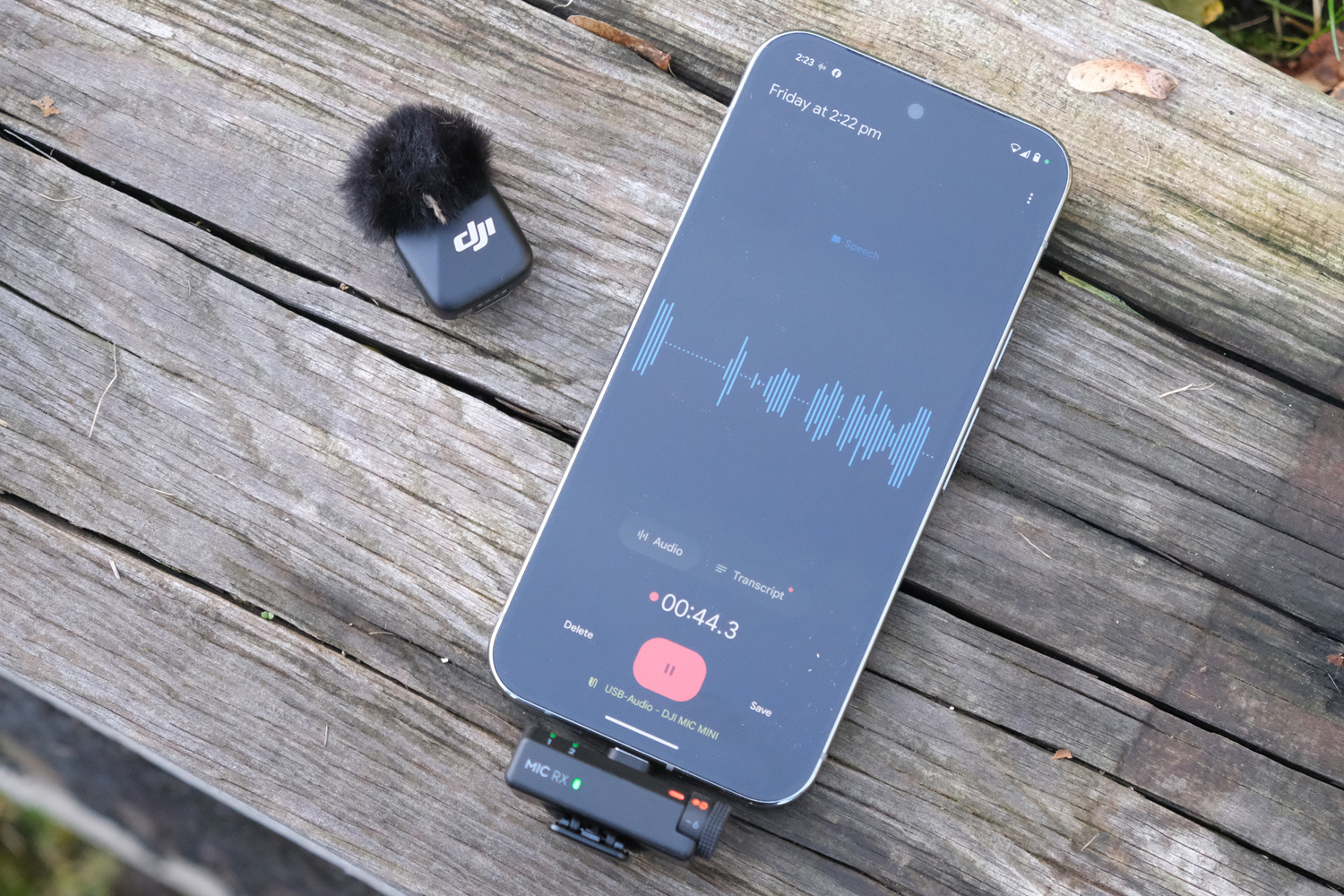
No matter the device I was recording into, the DJI Mic Mini captured clean, clear audio with minimal background noise. It has the clarity and detail that’ll be spot on for social media posts and YouTube videos, with no real need to tweak things in post-production thanks to the effective anti-clipping volume.
The wide pick-up pattern meant I didn’t have to be too picky about microphone placement, and the onboard noise cancelling did the job in louder environments – though don’t expect it to fully defeat things like passing traffic. The gain settings were easily adjustable on the receiver, and the wind shields did their job when stood outside on a blustery afternoon.
You’re not getting quite the same level of control as the Mic 2, but only pro-grade producers will moan when the base quality is as good as it is.
DJI Mic Mini verdict

DJI might be aiming the Mic Mini at beginner content creators, but it’s so versatile I can also see more established videographers adding one to their kit bag.
You’re not just limited to smartphone shooting, like you are with the Rode Wireless Micro; while I liked that microphone’s more compact case, it just can’t match the DJI’s upgrade path, and is only marginally cheaper. The Mic Mini just makes more sense if you routinely swap between phone and camera – or plan to in the future.
Foregoing more advanced features also means the Mic Mini doesn’t tread on the Mic 2’s toes, yet recording quality is still very good for the cash. Safety tracks and automatic volume control to prevent clipping mean you don’t have to be an audio engineer to get decent recordings, either.
If sub-par sound has been holding you back, the Mic Mini should be the next addition to your recording rig.
Stuff Says…
A brilliantly thought-out wireless microphone system that nails the basics – and has features more experienced content creators will love too.
Pros
Fantastic sound quality and consistent wireless range
Comprehensive and genuinely useful accessories
Modular approach suits all kinds of creators
Cons
Charging case isn’t the smallest
DJI Mic Mini technical specifications
| Microphone type | Condenser w/ omnidirectional pickup pattern |
| Frequency Range | 20Hz-20kHz |
| Transmission range | Up to 400m |
| Connectivity | Bluetooth, 3.5mm, USB-C, proprietary wireless |
| Battery life | 10.5hrs (transmitter) 11.5hrs (receiver) Up to 48 hours (with charging case) |
| Dimensions | 27x26x16mm, 10g (transmitter), 47x30x19mm, 18g (receiver) 96x41x59mm, 139g (case) |




